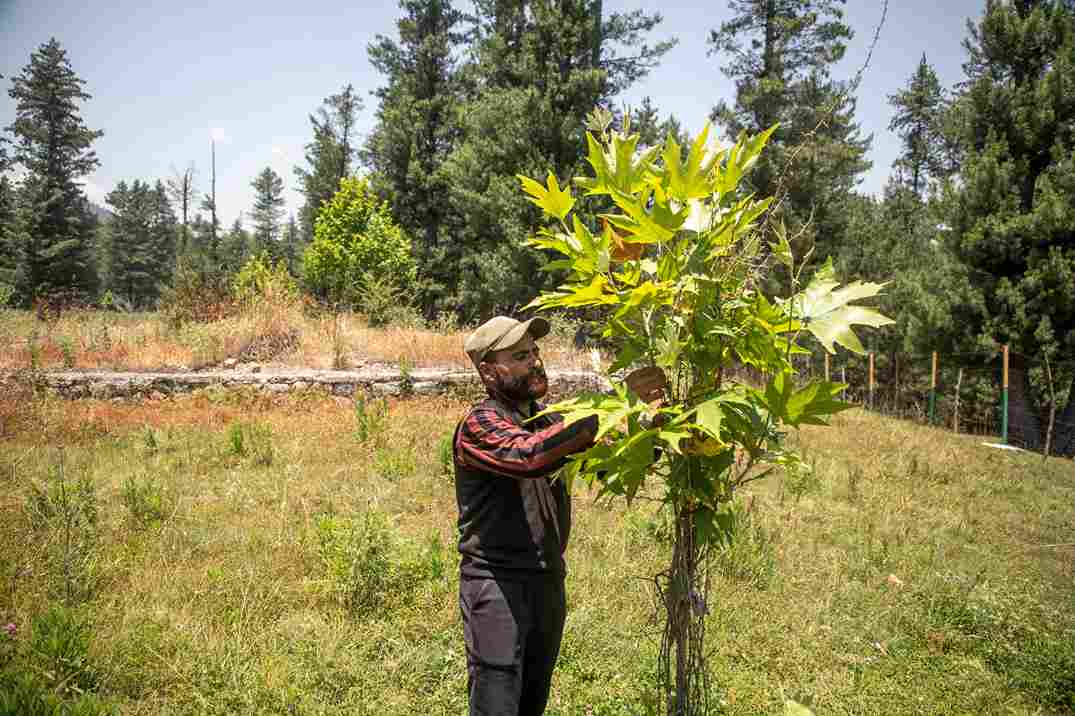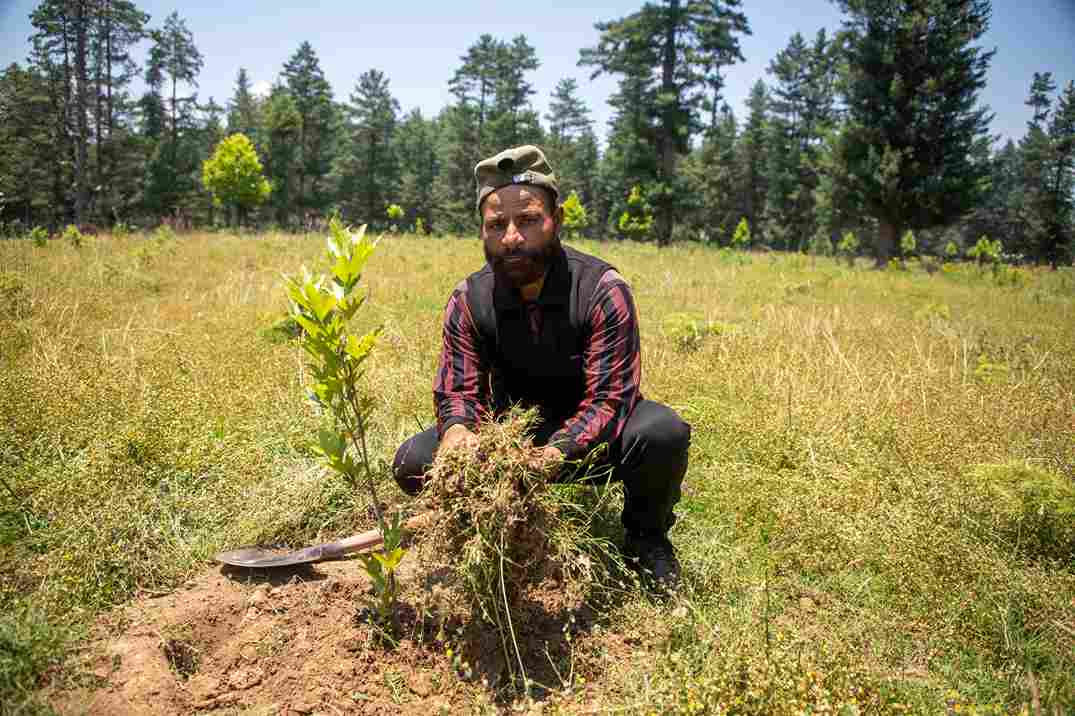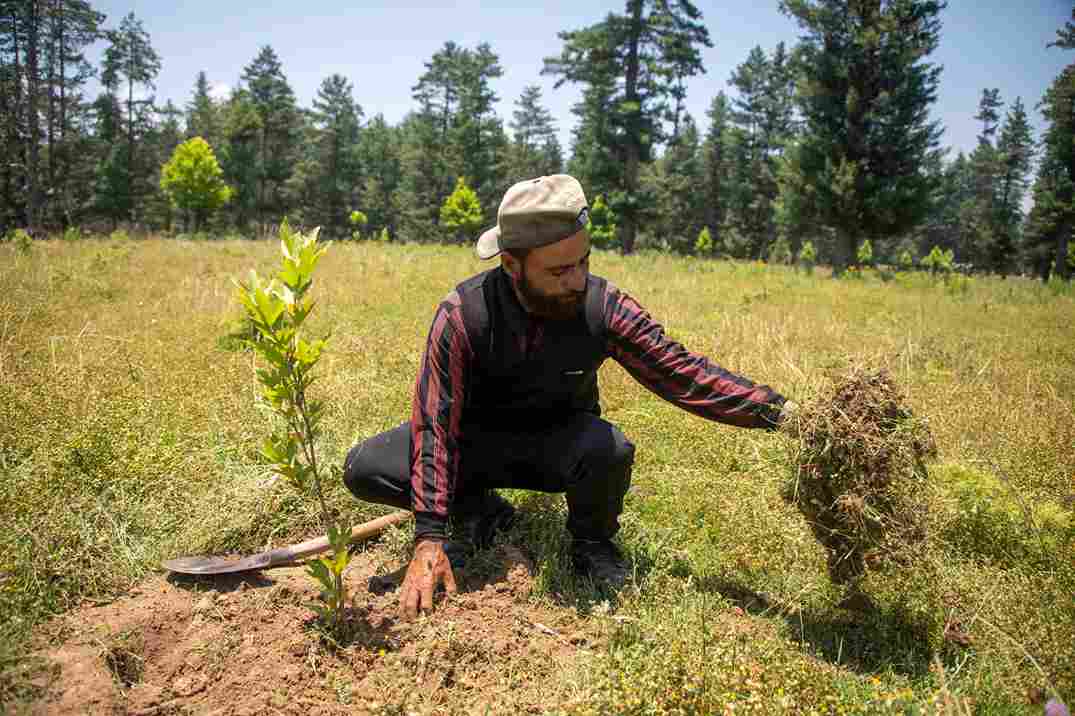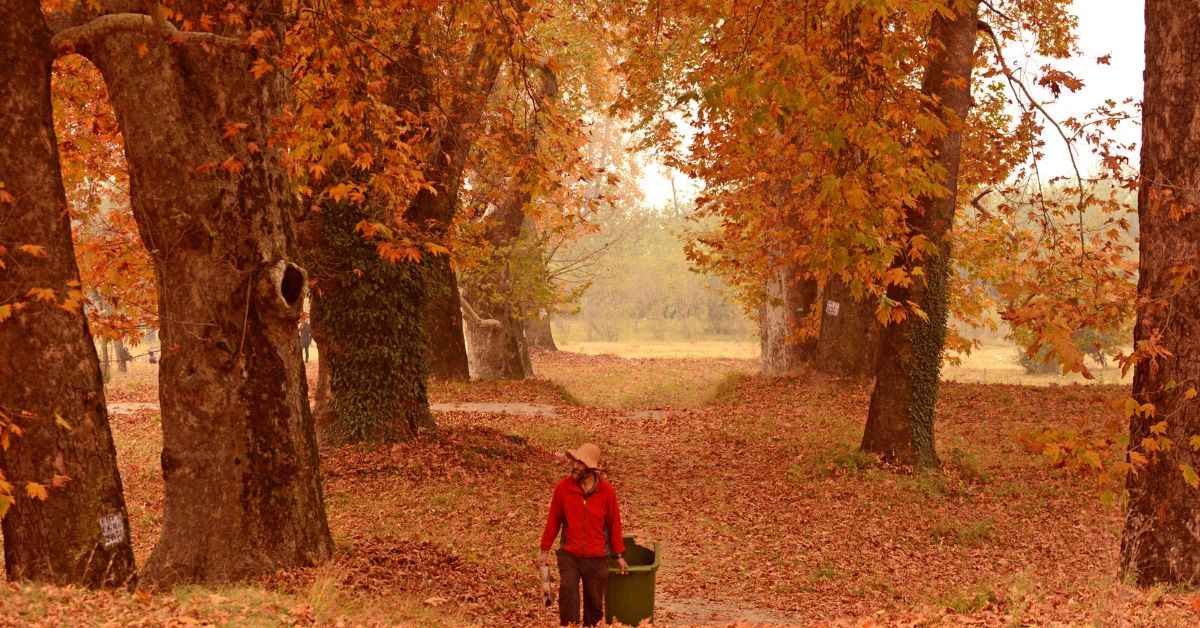[ad_1]
Featured picture above by Firdous Hassan.
In 2007, 38-year-old Abdul Ahad Khan in Kashmir’s Kupwara district was returning dwelling from his work as a every day wage labourer at development websites.
Because it was July, he determined to relaxation below the shade of a decades-old chinar tree in Hatmulla village. Whereas in repose, he realised that this tree was one of many few surviving ones within the village, as soon as recognized for its mighty chinar bushes. So he determined to embark on a mission to revive its dwindling plantation.
Regionally known as bou’in or boueen in Kashmiri language, and scientifically often known as the Platanus orientalis, the chinar tree grows over 20 metres in peak, whereas its girth can go as much as 50 ft.
The chinar tree is very revered in Kashmiri tradition and serves as an emblem of the area’s pure heritage. The tree is often portrayed in a wide range of inventive, poetic, and literary works. The oldest chinar tree is believed to be over 700 years previous and is in Budgam’s Chattergam village with a girth of over 50 ft.
Come 2023, Khan has planted greater than 300 chinars in Hatmulla, which is adjoining to his native village, Nagri Malpora. Concurrently, he has turn into part of the state forest division’s marketing campaign of planting over 1,000 chinars within the forests of Kupwara.
“It has now been 15 years since I planted chinars in Kupwara. What impressed me to start out this mission was that chinar, which is part of our wealthy historical past and tradition, was quick diminishing within the valley,” he says.

How his journey began
With little data concerning the authorities division to hunt assist or how one can plant these bushes, Khan began experimenting with its twigs.
“I began on the lookout for chinar bushes in my district whose twigs I might use for the subsequent plantations. I used to chop twigs randomly and plant them anyplace I might discover area again in my village. Regardless of planting them in lots of, I had little or no success,” he says.
Progressively, Khan discovered the process after consulting with the elders and consultants from his village. “Chinar plantation is a talent and a correct process must be adopted. A twig of correct size is required to efficiently obtain outcomes,” he stated.
Explaining the method intimately, he provides that when the planted twig begins forming roots, it’s once more planted in an open space. This complete cycle takes a few yr. The roots develop throughout the first six months following which, it’s shifted to the brand new plot the subsequent yr.

Geotagging and figuring out every tree
The Forest Analysis Institute of Jammu and Kashmir is presently geotagging chinars throughout the valley to know their quantity in addition to their well being.
Thus far, the institute has geotagged as many as 18,000 of those bushes throughout the valley and the remaining 10,000 are nonetheless below census. Officers on the institute declare that the key proportion of the chinars which are accounted for are diseased and require instant conservation efforts.
“We conduct an evaluation of each chinar tree by 25 traits like age, well being, peak, width, how prone they’re to illnesses, and which tree wants support. After protecting Kashmir, we are going to transfer to Chenab valley in Jammu to geotag the remainder of the chinars. Thus far now we have come to the conclusion that almost all of those bushes within the valley are diseased,” says Dr Syed Tariq, researcher and coordinator of the chinar census mission of the institute, saying that they’ve additionally created a document type to catalogue every tree.
Whereas the institute is now proposing to create a web based database of chinar bushes, they’re additionally taking varied revival measures — akin to constructing nurseries the place the chinars will be cultivated on a mass scale and taking immediate motion to remedy the diseased tree.
“The database is geared toward monitoring the bushes’ well being and development. We’re additionally elevating consciousness by way of social media campaigns and rising chinar tree saplings to extend their quantity within the valley,” Tariq says.

Khan’s efforts give Hatmulla a chinar plantation space
Realising Khan’s efforts, the forest division transformed 20 hectares of barren land in Hatmulla right into a chinar plantation unit, which presently has over 300 chinar bushes. The unit has turn into the primary of its sort within the valley, the place the bushes are cultivated on a mass scale.
“In 2019, once we noticed what Abdul Ahad Khan was doing with this barren land, we instantly transformed the 20-hectare plot right into a reserve. We demarcated the realm and erected fences to guard these chinar crops. As we speak, now we have 300 such bushes on this unit,” says Zahid Mughal, district forest officer of Kamraj, Kupwara.
The forest division is utilizing Khan’s proficiency throughout all chinar plantation drives within the district. “Khan has an excellent data concerning the slicing and planting of saplings with a minimal failure price. Since he’s a every day wage labourer, the division offers him work through the plantation season and whereas sustaining the bushes within the district,” Mughal says.

Chinar plantation is like charity for Khan
To Khan, planting bushes is much like Sadaq-e-Jaira (a form of charity in Islam, the rewards of which an individual continues to obtain even after demise) so that individuals might discover shade through the scorching summers.
“I do know these bushes will profit the individuals of my locality. Our ancestors knew some great benefits of chinar which is why they planted this tree in virtually each village of Kashmir. For me, it is sort of a spiritual responsibility and I’ll proceed this mission until my final breath,” he provides.
Khan, who nonetheless works as a every day wager to eke out his dwelling, has devoted two days per week to nurturing these bushes.
“When the local weather may be very sizzling, these chinars require to be watered periodically. So, I don’t go to work for 2 days per week, however as a substitute, I spend my complete day watering them. Although I’m poor and work as a labourer, I nurture these bushes like my very own children; they’re like my youngsters,” he says.
Khan has not married and lives together with his mom and brothers. He has impressed his household and others to take care of the chinars as effectively.
After the chinars, Khan has now prolonged his mission by planting deodar and different pine bushes within the forests. He can expertly deal with this process now after updating himself about it. He continues to work in plantation drives and hopes that others will recognise the necessity for instant afforestation efforts.
“Although many aren’t a lot excited by this kind of social work in my space, there are nonetheless some who go to and assist me out. I hope sometime, everybody realises the necessity for a inexperienced and clear setting and that Mom Nature is conserved,” he says.
Authored by Firdous Hassan.
(Edited by Padmashree Pande)
[ad_2]


